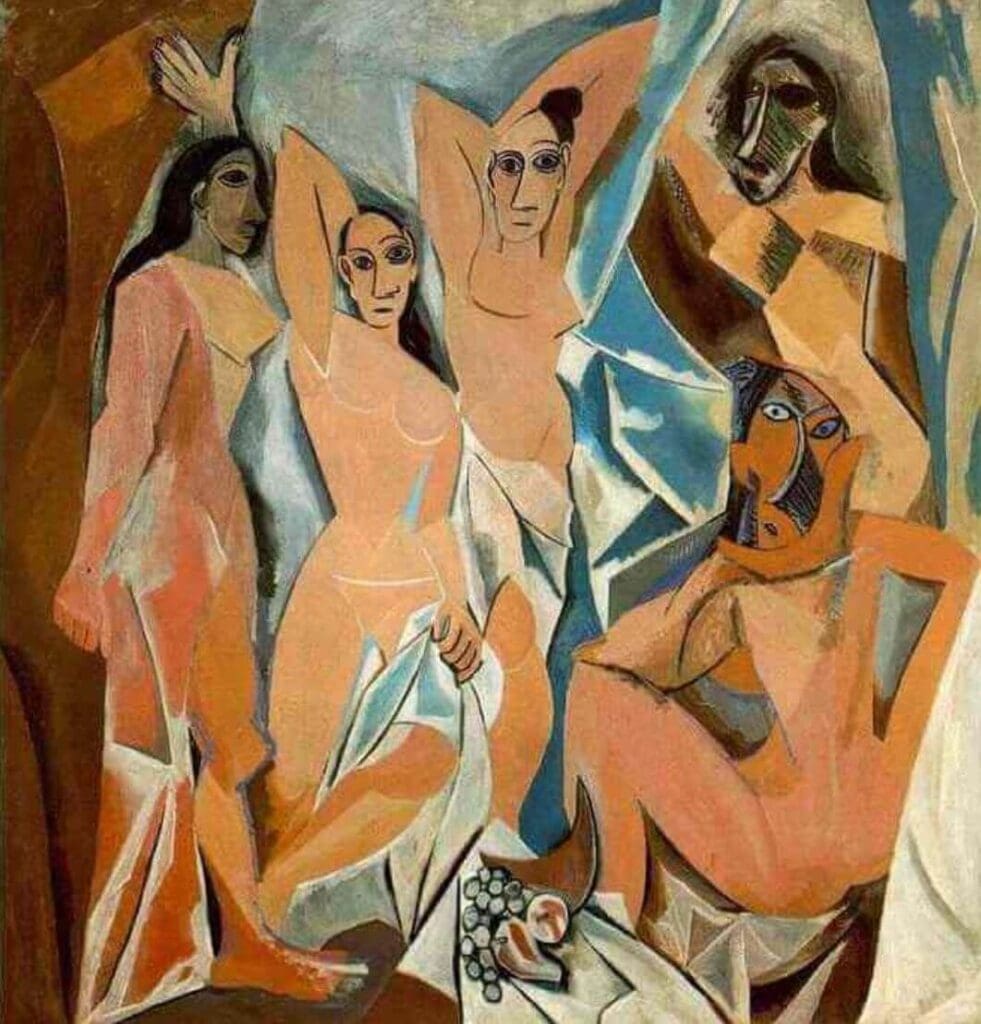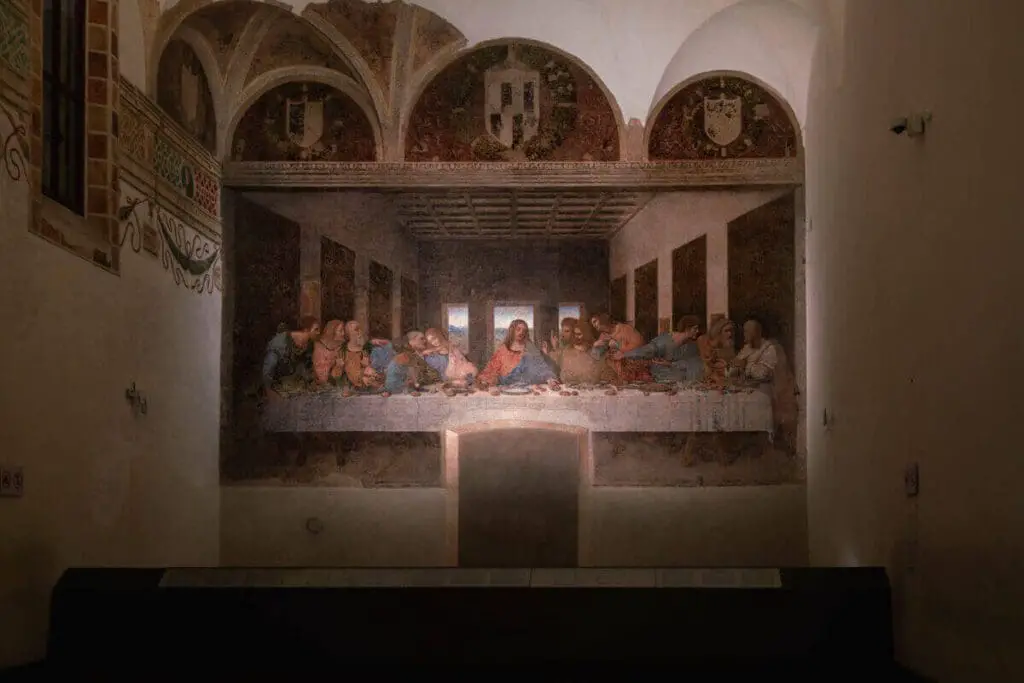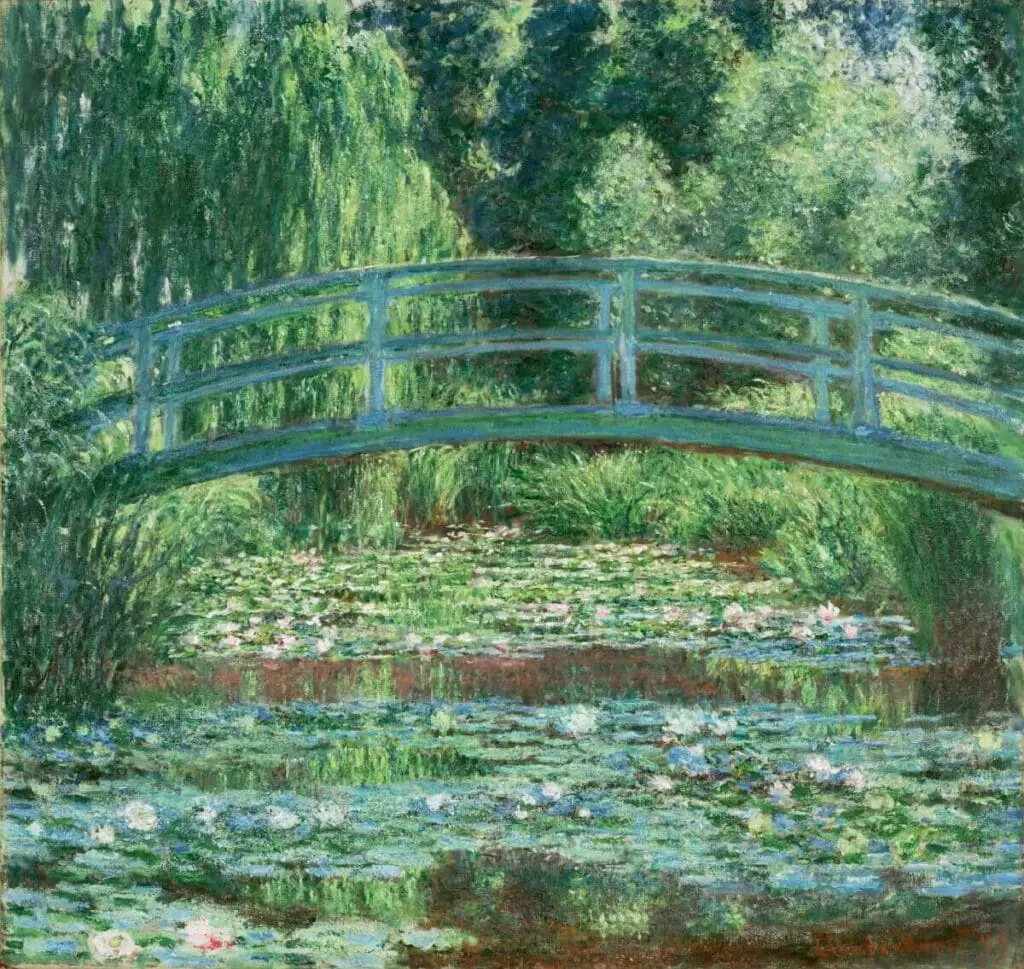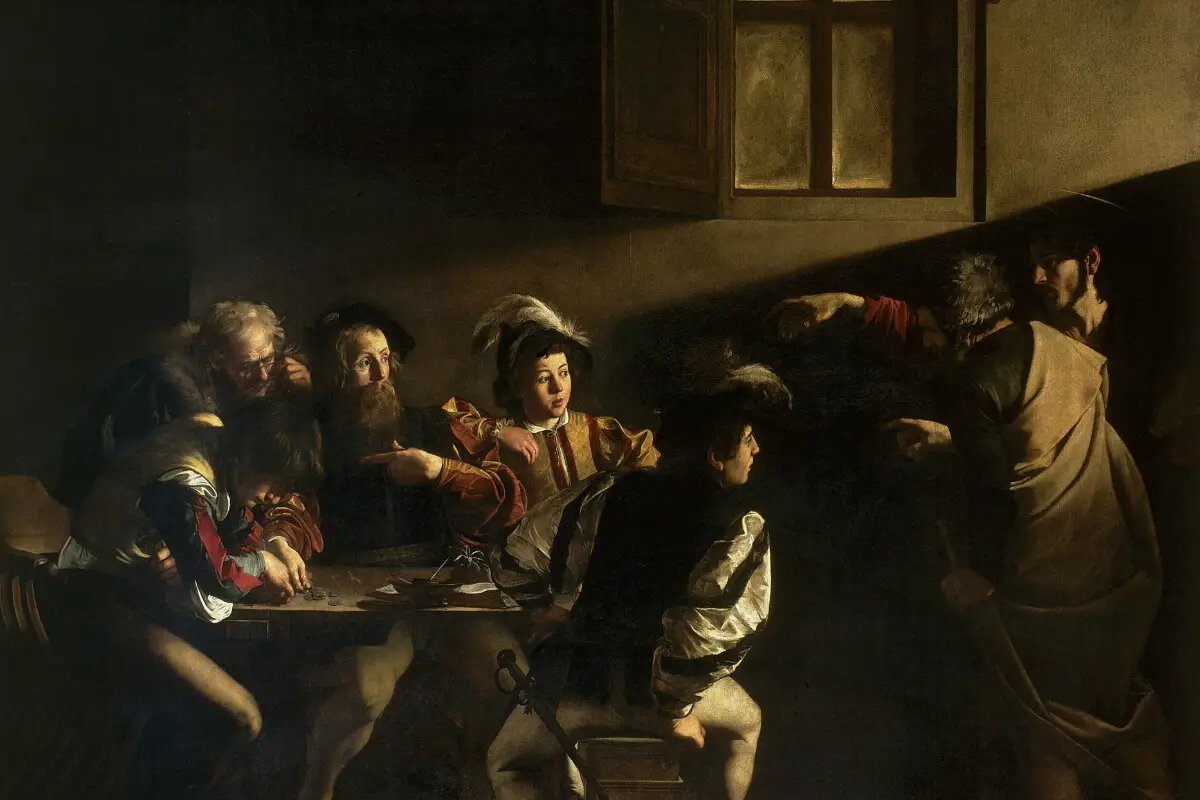Art serves many purposes, whether it tells a story, sparks an emotional response, or brings beauty into our lives. However, at its core, art uses visual elements and principles such as balance to create a sense of harmony in a composition.
The essence of balance in art remains connected to various design aspects. It acts as a silent orchestra conductor, assuring each element performs harmoniously with the others. This piece explores balance as a fundamental aspect in creating visually stable and engaging works. It looks into its different types, implications throughout art history, and how it’s interpreted in contemporary art.
Table of Contents
- Fundamental Understanding of Balance in Art
- Types of Balance in Art
- Balance and Its Implications in Art History
- Understanding Balance Through Famous Artworks
- Balance in Contemporary Art
- Related Questions
Fundamental Understanding of Balance in Art
Balance, an essential principle of art, injects harmony, equivalence, and stability into creative pieces. It creates relief amidst the chaos, transforming ordinaries into visual spectacles that animate emotions and provoke thoughts.
Balance in art can be likened to rhythm in music; it is not always symmetrical, but there must be a “rhythm” or flow that harmonizes all elements. Every brush stroke, color, or shape is meticulously placed to achieve equilibrium — a sense of heaviness or lightness conveyed through an artistic composition.
The pillars of balance in art come in three primary forms: symmetrical, asymmetrical, and radial balance. Each infuses a unique character into the artwork, resulting in a spectrum of effects that charm the viewer.
Symmetrical balance, or formal balance, follows the weight of elements evenly across an axis. The left mirrors the right, as seen in iconic works like Leonardo da Vinci’s “Last Supper.” Symmetry exudes an air of stability and harmony, providing a sense of calm and order.
Asymmetrical balance, or informal balance, allows more freedom. It balances using elements with equal visual weight; the design feels stable despite a lack of symmetry. It engages viewers through a visual journey, with elements from different sides pulling against each other to achieve an intriguing equilibrium. Works like Edvard Munch’s “The Scream” exemplify this balance type, inducing emotion and narrative sophisticatedly.
Radial balance radiates from the center of the composition, spreading outwards like rays of the sun or petals of a flower. It portrays energy, movement, and unity in the piece. Botticelli’s “Birth of Venus” reflects radial balance, commanding attention towards the central figure and directing the eyes outward.
In art, an understanding of balance puts mastery at the fingertips. It enables artists to arrange elements such that overall perception is not overwhelmed by particular aspects. It ensures different elements coexist amicably, converging into a visually satisfying ensemble. It’s a delicate dance of equilibrium, introducing equilibrium to chaos, formality to freedom, and unity to multiplicity. Thus, balance forms the unifying thread that prevents an artwork from collapsing into a disjointed array of elements, guiding each one to its rightful place on the canvas or sculpture.
Balance is not just an aspect of artistic design; it’s an invaluable tool in an artist’s repertoire, facilitating the portrayal of their vision onto the physical plane. Familiarity with its principles aids artists and art lovers in capturing and appreciating the harmony, counterbalance, and interplay of elements that generate great art’s emotional and intellectual resonance.
Types of Balance in Art
Delving further into the world of balance in art, it becomes identifiable just how intricate and loaded the essence of this principle truly is. Balance isn’t simply an emotionless, mathematical calculation. It is about more than just creating symmetry or a mirrored image. It is about capturing an intangible equilibrium that makes an artwork feel complete in its dynamism and helps to express the artist’s subconscious thoughts into reality.
One can’t overlook the subtle beauty in the vesica piscis, a fundamental principle used widely during the Medieval Ages, an example of crystal balance and overlap seen in art. The concept is derived from the intersection of two identical circles and was often employed in religious works of art to signify unity and spirituality. Such is the balance within bilateral symmetry, so often exhibited throughout the natural world around us, used as an instrument of aesthetic resonance by artists.
Moreover, distilling the asymmetry found in abstract art is about creating a sense of tension and dynamism. Dispersed elements of varied sizes, textures, or colors might initially strike as chaotic; however, a closer inspection reveals a deeper order in that chaos, a complex balancing act that is nothing short of breathtaking.
For instance, works by cubist artists, like Picasso’s Les Demoiselles d’Avignon, present a spectacular showcase of informal balance. Here, different elements line the canvas in an almost rhythmic dance of dynamism, yet somehow, they emanate a sense of calm and balance. Asymmetry provides that sense of movement and life that symmetry doesn’t always offer.

Subtler still is radial balance, found in snowflakes and flowers and replicated in art and architecture through mandalas and domes. This form of balance radiates components from a central point; a marvelous demonstration of such balance can be seen in the intricate detail of ‘The Rose’ window from the Gothic cathedral of Notre Dame in Paris. Reminiscent of a blooming flower, each petal appears to mimic its counterparts in perfect harmony, a testament to the unity of form and balance.
Equally crucial to the concept of balance is the concept of tension or counterbalance. It is the presence of contrasting elements, how they interact and how they complement, that gives artwork its vibrancy—its life, its soul. Renowned artist Piet Mondrian ingeniously employed this principle in his works, employing simple lines and primordial colors to produce a profound sense of harmony.
Indeed, the concept of balance extends beyond mere visual components. It weaves the spiritual tapestry that artists incorporate into their work. The ideas of harmony and resistance, unity and division, complacency and upheaval all contribute to art’s infinite spectrum of balance.
Thus, by uncovering the woven layers of balance in art, the majesty of the carefully calculated compositions comes to light. From symmetrical balance’s tranquility to asymmetrical balance’s dynamic energy to radial balance’s harmonious unity, balance in art acts as silent poetry narrating the saga of artistic expression. The beauty of this understanding lies in the endless opportunities it provides to perceive and appreciate art. In art, as in life, balance is not merely a condition to observe but a vast ocean of understanding to explore. Each wave of discovery adds to the inexhaustible depth, and each ebb creates space for further exploration.
Balance and Its Implications in Art History
Evolving from its earliest appearances in the harmony-minded, equilibrium-focused artistry of ancient Greece, the concept of balance has matured into a foundational tenet spanning eras, cultures, and movements. Examining the progression of balance in art unveils an ongoing dialogue amongst artists, reflecting prevalent concerns of symmetry and asymmetry and ongoing experimentations with radial balance.
Exploring the journey of balance through art history, it’s noticeable that the late medieval artists used the concept of the ‘Golden Mean.’ Guided by the principle of achieving perfect symmetry, artists created compositions with ideal proportions believed to mirror divine beauty. The ‘Last Supper’ by Leonardo Da Vinci exemplifies this approach, where each element’s placement follows a harmonious scheme, forming a balanced and aesthetically pleasing arrangement.

Evolution still in progress, balance waltzed into the Renaissance on the arm of mathematical precision. Artists turned their eyes to the natural world, incorporating its inherent symmetry to enhance their work. Piero della Francesca’s ‘Flagellation of Christ’ exemplifies this shift, where the implied line of Jesus mirrors that of the flagellator, bringing an unexpected balance to the otherwise chaotic scene.
As the art world ventured into the Baroque period, symmetry was wielded in an unprecedentedly dramatic manner. Employing contrasting light and dark themes, artists such as Caravaggio used balance not merely for aesthetic harmony but to heighten emotional intensity. His works, such as ‘Judith Beheading Holofernes’, fashion a fulcrum between violence and calm, with balance becoming a powerful storytelling tool.
The balance then entered a revolutionary phase during the Impressionist movement. Artists started to embrace asymmetry, breaking away from traditional notions of balance to explore novel means of creating harmonious compositions. The juxtaposition of colors, light, and texture became their balancing elements, offering viewers a fresh perspective on what constitutes a balanced artwork. In Monet’s painting series of ‘Water Lilies,’ asymmetry turns into magnificently balanced displays.
Abstract art pushed the envelope further, bringing an exciting upheaval with the Cubists’ exploration of balance through fragmentation and multiple perspectives. Within the realm of abstraction, Piet Mondrian pushed the limits of balancing contrasting elements, using stark lines and pure colors to stir perceivable tension within harmonious compositions.
Coming full circle, contemporary artists now encompass all manifestations of balance from the annals of art history. From the calculated symmetry of earlier periods to the intuitive asymmetry of later movements, these artists showcase balance as an enduring anchor amidst sea changes, never losing its powerful undercurrent, its resonance in the eyes of art lovers resonating still today, forever an integral part of the narrative spun by the hands of skillful artists.
In this journey through centuries, balance has consistently been the measuring scale of harmony, a testament that the quest for equilibrium is at the heart of creative expression. Regardless of the form or era, it continues to captivate audiences with its potent ability to evoke an innate sense of aesthetic beauty. For a discerning observer of art, understanding the evolving concept of balance sense provides an enriching dimension to one’s comprehension of art and its mesmerizing narratives.
Understanding Balance Through Famous Artworks
Understanding balance in art is a robust exploration, a journey that takes us through the annals of time. Each epoch in art history offers a unique take on the concept of balance, demonstrating its transformation and enduring presence in aesthetics.
Much like the golden thread that weaves through the tapestry of art history, balance is infused in every stitch, silently contributing to the evolution of styles and movements. Let’s take a stroll through the time and each era’s approach.
Balance was not merely an artistic concept but a fundamental principle of existence in ancient Greece. The Greeks revered balance and symmetry in everything, from architectural masterpieces to fine sculptures from this period. The Golden Mean, a mathematical proportion that signals perfect symmetry, was often applied, best exhibited in their iconic Parthenon, laying down roots for artworks of harmonious proportion.
Fast-forward to the Renaissance, an era when artists passionately pursued their meandering adventures with balance. Artists used mathematical precision to emphasize balance, creating beautiful, symmetrical works infused with harmony. Leonardo da Vinci’s “Last Supper” masterfully balances its figures and elements, displaying a keen understanding of symmetry and its dramatic impact.
However, the Baroque period ushered in its flavor of balance. Artists began to use symmetry more dramatically, juxtaposing light and shade and immobile and dynamic figures to create a stunning contrast. Look at Caravaggio’s “The Calling of Saint Matthew,” where the strategic placement of figures and light creates an intense dynamism that challenges traditional symmetrical balance.
With the dawn of the Impressionist movement, artists embraced asymmetry, presenting a novel approach to balance. They believed balance didn’t mean mirroring one side to the other; instead, it was about harmonious yet diverse elements co-existing on a single canvas. The suspension bridge in Claude Monet’s “Water Lilies and Japanese Bridge” is enough to incite a burst of colors that retain visual equilibrium.

Abstract art was no different, as it went further to fragment balance. Artists started exploring informal balance, which refrains from perfect symmetry but achieves equilibrium through distributing visual weight. Wassily Kandinsky’s “Composition 8” offers a stunning play of geometric shapes and contrasting colors that tinker with balance while retaining harmony.
In contemporary art, creative minds encompass all manifestations of balance. From symmetry to asymmetry to radial, balance is a versatile instrument, inspiring artworks that re-imagine physical and emotional landscapes. Anish Kapoor’s “Cloud Gate” beautifully harmonizes reflection, curvature, and surroundings, exemplifying balance’s subtle yet enduring role in fluid modernity.
Art embraces balance as a foundational tenet, a measuring scale of harmony, manifesting in the pulsating undercurrent that threads through periods, styles, and techniques. It’s a unique lens that amplifies the subliminal rhythm, inviting us to delve deeper into an artwork’s essence. It’s an enduring quest for equilibrium, echoing in every stroke etched onto the canvas, every chisel on the marble, and each camera click.
Understanding balance becomes vital to comprehending and appreciating art. It takes us beyond the physicality of a work of art, seeping into its philosophy and intent, unraveling aesthetic truths that become gateways to perception. The pursuit of balance is a dance between the artist’s vision and the viewer’s perception, reflection, and solitude, all culminating in the heart of art’s enduring beauty.
Balance in Contemporary Art
Contemporary art often channels the vast concept of balance in seminal ways. It goes beyond merely symmetrical and asymmetrical balance, integrating the concept into the artwork’s dynamics. One such example involves the respect for space dimension or ‘z-axis’, diving into the world of depth and motion. Today’s artists employ balance by not only focusing on the horizontality of the canvas but also giving importance to the foreground, middle-ground, and background elements, honing the depth panorama of three-dimensional art.
For instance, the growing artistic interest in conceptual representations has addressed balance through the thought-provoking juxtaposition of contradictory ideas rather than apparent visual stimuli. This balance of contrasts relies on conceptual balance rather than a purely aesthetic symmetrical or asymmetrical balance. Contemporary artwork might place two starkly different concepts together in the same frame, creating a harmonious unity through contrast.
Furthermore, even within the avant-garde movement, balance works as a musical conductor that moderates the intensity of individual notes to compose an integrated symphony. This modern approach drives home a message of unity in diversity, where contrasting elements combine to create a visually balanced whole.
Look at the abstract expressionists, who use color blocks and seemingly disordered forms yet maintain harmony through carefully balanced structure. The influential Mark Rothko’s paintings are ostensibly composed of semi-abstract colored rectangles, but they’re subtly and brilliantly balanced, creating an emotionally powerful effect when observed in totality.
Pop art, another contemporary movement, also uniquely employs balance. Artists like Andy Warhol used screen printing to repeat images, creating a fascinating symmetrical balance. Yet the repetition was not just a design choice but a conceptual one, aiming to comment on the mass production in the consumerist society.
In installations and sculptures, balance often becomes a tangible factor. Anish Kapoor’s Cloud Gate, also known as The Bean in Chicago, celebrates the unification of sky and cityscape reflected on its seamless stainless-steel surface. This balance between nature and man-made elements becomes a core part of the artwork.
Sculptors often play with physical balance through suspended or precarious arrangements, where balance becomes integral for structural stability and aesthetic coherence. Richard Serra’s mammoth steel structures seem to defy gravity, risking imbalance yet staying balanced, creating a profound emotional experience through the seeming scan of precariousness.
On a more psychological level, contemporary art uses balance to embody life’s ebbs and flows. Balance demonstrates the delicate equilibrium between happiness and sorrow, achievement and failure, life and death—the contrasting elements that underline human existence. In Yoko Ono’s Instruction Paintings, for example, balance becomes a cerebral invocation, guiding the observer through a meditative interaction and dialing a harmony between the viewer’s perception and the art.
Contemporary art treats balance as an instrumental language transcending beyond formal aesthetics into realms of conceptuality, emotion, and life itself. Recognizing how contemporary artists manipulate balance provides a deeper understanding and appreciation for modern art’s complexity, depth, and breadth. This awareness unravels art’s layers, enriching our engagement with the innovative spirit of contemporary creativity.
Art continues to transcend boundaries, challenging perceptions and embracing innovation. Balance, an enduring principle of art, is part of this continual evolution. Different kinds of balance – symmetrical, asymmetrical, and radial – have been leveraged by artists from various periods, each bringing their unique interpretation and adaptations, leading to an enriched understanding of this design principle.
By examining and appreciating the nuances of balance in renowned historical and contemporary artworks, we gain a deeper understanding of art’s inherent beauty and the dimensions it brings to our visual experiences. As balance skilfully dances on the line between order and chaos, it will undoubtedly remain a crucial component in the ever-advancing journey of art.
Anita Louise Art is dedicated to art education, great artists, and inspiring others to find and create their art. We love art that uplifts and inspires. #ArtToMakeYouSmile! #ArtToMakeYouHappy!
If you are interested to see any of my art, you can find out more by clicking here. If you are interested in what inspires me and my paintings, you can discover more by clicking here.
We have a free newsletter and would love you to be part of our community; you can subscribe to the newsletter by clicking here. If you have any questions, I would be happy to talk to you anytime. You can reach me, Anita, by clicking here.
Subscribe to our Anita Louise Art YouTube Channel filled with great videos and information by clicking here.
Join us for our podcast “5 Minutes With Art.” Spend just 5 minutes a week with us to discover and learn about great art and artists. You can find out more about our podcast by clicking here.
Related Questions
Louvre Museum Facts, Our Top 7 Facts
The Louvre is the largest museum globally; it was once built as a fortress to protect the city of Paris. Under the French Republic’s rule, General Napoleon expanded the Louvre’s collections. One of the most important paintings at the Louvre is the Mona Lisa painting by Leonardo da Vinci.
By clicking here, you can discover more by reading Louvre Museum Facts, Our Top 7 Facts.
11 Interesting Facts About Traditional Hawaiian Art
Hawaiian art is divided into three main periods: pre-European art, Nonnative Hawaiian Art, and Hawaiian Art With Western Influences. After Captain Cook arrived in Hawaii in 1773, traditional Hawaiian art changed as Western culture influenced Hawaiian art. The Volcano School of Art was developed in Hawaii in the late 1800s when the artist’s work became impacted by the live volcanic eruptions in Hawaii.
By clicking here, you can learn more by reading 11 Interesting Facts About Traditional Hawaiian Art.
Am I Too Old To Start Oil Painting?
You are never too old to learn to oil paint. You can start to oil paint at any age. If Grandma Moses could learn to paint at age 78, then she set an example for us all – that you are never too old to learn to paint. There are some advantages to learning to paint when you are older vs. younger.
By clicking here, you can discover more by reading Am I Too Old To Start Oil Painting?

